Unpacking the past: Why we need a fresh, nuanced historical analysis of the 1971 Liberation War
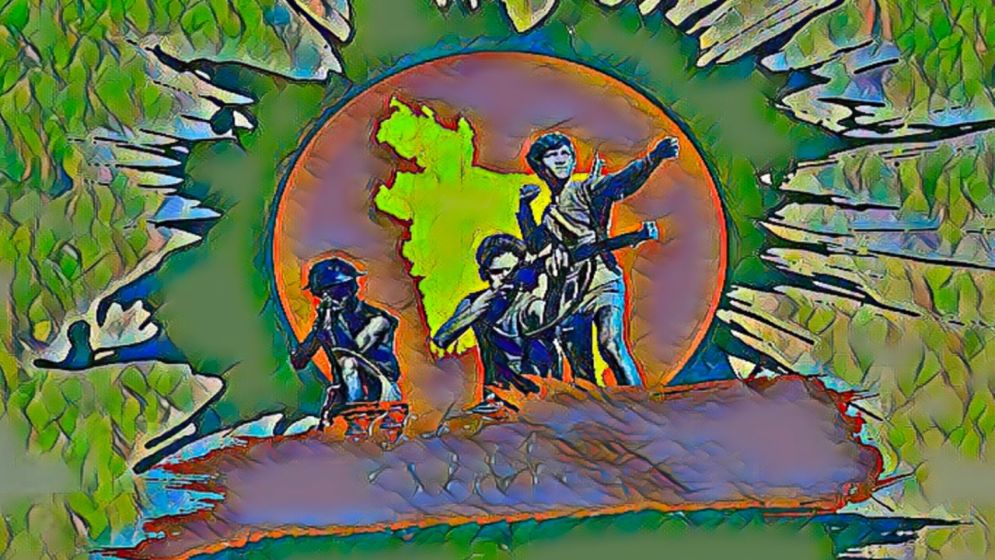
History is not merely a record of past events, but a powerful tool that shapes political ideologies and societal identities.
In the world of political history, narratives often become weapons wielded by those in power to legitimize their rule and consolidate authority.
As writer Ahmad Sofa insightfully noted, “Every nation distorts history to serve its interest,” echoing Winston Churchill’s famous declaration that “History is written by the victors.”
These statements underscore a fundamental truth: historical narratives are often curated, sometimes manipulated, to support the existing political order.
This concept is perhaps best encapsulated in George Orwell’s 1984, where he writes, “Who controls the past controls the future. Who controls the present controls the past.”
Similarly, historian Eric Hobsbawm observed, “History is the raw material of nationalist, ethnic, or fundamentalist ideologies,” emphasizing how the past becomes a battlefield for those seeking to assert ideological dominance.
Understanding history is therefore far more than an academic pursuit—it is a critical tool for navigating contemporary political realities and guarding against the recurrence of past errors.
In Bangladesh, the Liberation War of 1971 stands as both a defining and deeply contested chapter in the nation’s history.
For the past sixteen years, the political narrative surrounding the war has been intentionally shaped, largely by the ruling Awami League government.
The party has placed significant emphasis on symbols of the war, such as the “Spirit of ’71,” the veneration of Sheikh Mujibur Rahman as the “Father of the Nation,” obscuring the nuances and broader legacy of the Liberation War.
However, the lingering question remains: Is this renewed focus truly a reflection of genuine respect for the war, or is it part of a broader strategic political agenda?
There was no doubt that by repeatedly invoking these symbols, the Awami League aimed to embed specific messages into the national psyche: that Sheikh Mujibur Rahman and the Awami League were the sole liberators of Bangladesh, that the Awami League and Sheikh Hasina’s family possess an inherent right to govern, and that anyone who opposes this narrative is inherently anti-state or anti-liberation.
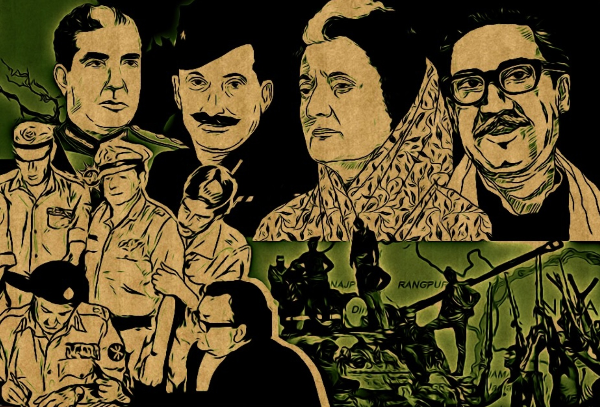
The true complexity of the
Liberation War
This constructed version of history has had profound political repercussions.
The Jamaat-e-Islami, long accused of collaboration with the Pakistani military during the war, has been systematically delegitimized.
Similarly, the Bangladesh Nationalist Party (BNP) has been cast as an ally of war criminals, positioned in opposition to the “Spirit of the Liberation War.”
Through these strategic appropriations of history, the political landscape of Bangladesh has been shaped in ways that elevate one narrative while discrediting others, effectively cementing just one party’s authority.
However, the fact is, the Liberation War of 1971 is far from a singular, unified event and the “property of one single party.”
Its complexity demands a thoughtful, nuanced approach to understanding, as T.S. Eliot famously noted, “History has many cunning passages, contrived corridors, and issues,” reminding us that historical events are often layered and multifaceted.
Across the world, nations that have experienced division and conflict—such as Germany, Yugoslavia, Sudan, and Korea—have grappled with their complex pasts.
Many, including the United States and England, France and Germany, and even Japan, have endured violent wars.
Yet, these nations have often chosen the path of reconciliation, engaging in meaningful dialogue and extensive historical research rather than allowing their pasts to remain points of division.
In contrast, Bangladesh remains deeply fractured over its own history, with limited scholarly engagement and few spaces for open discourse.
To understand this divide, it’s crucial to differentiate between history and historical narratives.
History refers to the actual events that took place, grounded in evidence and firsthand accounts—events like World War I, the Partition of India in 1947, and the Liberation War of 1971. These events are not up for debate; they happened.
However, narratives are the interpretations of these events, shaped by political, cultural, or ideological perspectives.
For example, one narrative of World War I may focus on imperial greed and political alliances, while another may view it as the rise of modern nationalism.
This distinction is essential because historical narratives often arise from gaps in documentation or the passage of time.
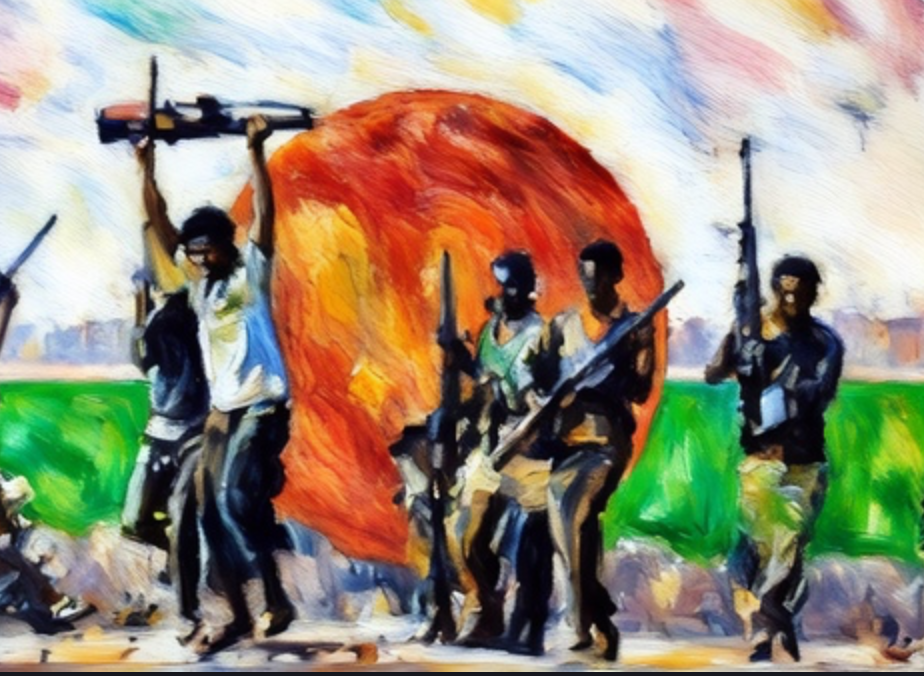
How to interpret historical
narratives
The Principle of Temporal Distance suggests that objective historical research becomes more achievable after a certain period, allowing emotional biases to fade and new evidence to surface.
Understanding this dynamic is key to addressing Bangladesh's ongoing struggle with its past.
We have to understand that a key challenge in studying the history of Bangladesh's Liberation War of 1971 is the lack of comprehensive and reliable documentation.
For years, a single narrative has been promoted as the definitive account of the war, leaving many crucial questions unresolved. One of the most debated aspects is the number of martyrs.
While the government has declared a specific figure, there is little documentary evidence to back this up, and even official records present contradictory information. For instance, the number of fatalities at Dhaka University is still contested.
The university has preserved records of those killed, including teachers, students, and staff, with 150 names engraved on a wall at the DUCSU museum. However, no female students are listed among the deceased.
Official government documents, such as the Swadhinata Dalilpatra (Documents of Independence), paint a more harrowing picture, claiming that 300 female students were killed at Rokeya Hall alone, with no names or departments provided for these victims.
The issue of the declaration of independence is another contentious point. Some sources claim that on the night of March 25, Tajuddin Ahmed met with Sheikh Mujibur Rahman just before his arrest, and that Sheikh Mujib was prepared to surrender to the army, unwilling to go underground or sign a declaration of independence.
However, others point to Major Zia, who declared independence on March 27, initially proclaiming himself President and later making the declaration on behalf of Sheikh Mujib.
This discrepancy raises fundamental questions: Why is March 26 celebrated as Independence Day? Who truly declared Bangladesh’s independence?
Another unresolved issue is the number of freedom fighters. There is significant disagreement over the total count, with allegations that many names were added to the list for political purposes.
Some individuals, like the former Minister of Housing and Public Works, S.M. Rezaul Karim, was listed as a freedom fighter despite being only nine years old in 1971.
This manipulation of historical records complicates the understanding of who truly participated in the struggle for independence and challenges the authenticity of the narrative that has been constructed around the war.
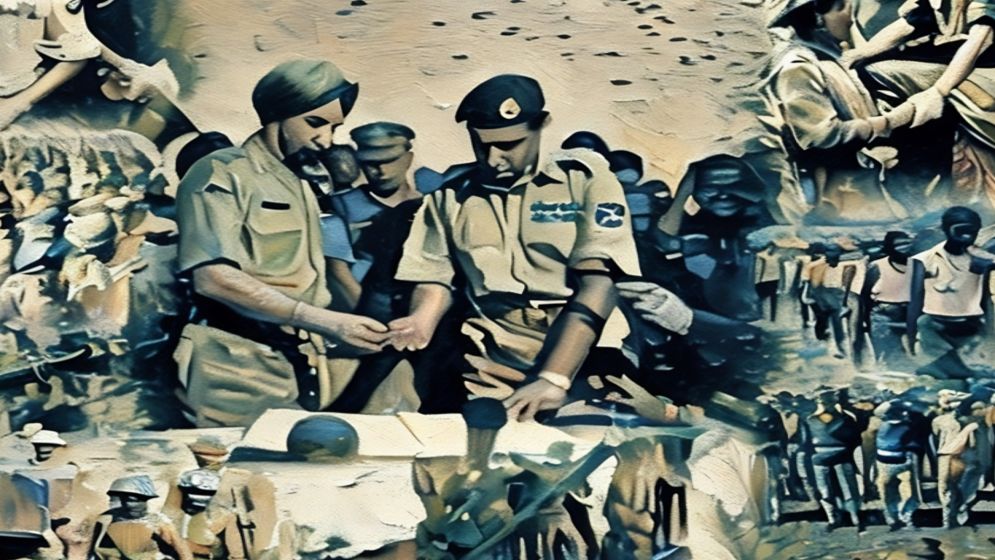
The need for nuanced perspectives
The armed struggle for Bangladesh’s independence has long been shaped by neglected accounts of key players and their contributions.
In 1962, Sirajul Alam Khan, a brilliant and ambitious student leader inspired by the Jugantar group, founded a covert organization called Nucleus, alongside Abdur Razzak and Kazi Aref Ahmed. Abul Kalam Azad later joined the group.
Nucleus was formed with the goal of achieving East Pakistan's independence and establishing a new form of socialism.
Over time, the group operated under different names—Swadhin Bangla Nucleus, Bangladesh Liberation Force (BLF), Joi Bangla Bahini, and Mujib Bahini. By 1970, approximately 7,000 members had received military training and were ready for armed struggle.
Between 1966 and 1971, Sirajul Alam Khan and Nucleus were pivotal in spreading the Six-Point Movement across the country, elevating Sheikh Mujibur Rahman to the status of Bangladesh’s most important leader.
Many believe that without Khan’s influence, Sheikh Mujib would never have achieved the title of Bangabandhu, and the partition of Pakistan may not have occurred.
Nucleus played an instrumental role in shaping the nation’s identity, contributing to key elements of the liberation movement, including the creation of the slogan “Joy Bangla,” the design of the national flag, the selection of the national anthem, and the drafting of the declaration of independence.
These actions were carried out according to Nucleus’s plans, despite strong opposition from most Awami League leaders, except for Sheikh Mujib and Tajuddin Ahmed.
Sirajul Alam Khan reflected on the vision for independence, saying, “Intellectuals, even on the eve of March 1971, could not envision Bangladesh’s independence. Not just intellectuals, but political parties of all sizes, including the Awami League, did not support the idea of independence before March 1971.”
Despite their significant contributions, Nucleus and Khan’s efforts have largely been overlooked in mainstream historical accounts, which suggest that Bengalis only took up arms after March 26, 1971.
In reality, Nucleus members had been preparing for armed struggle and working toward independence long before the official declaration of war.
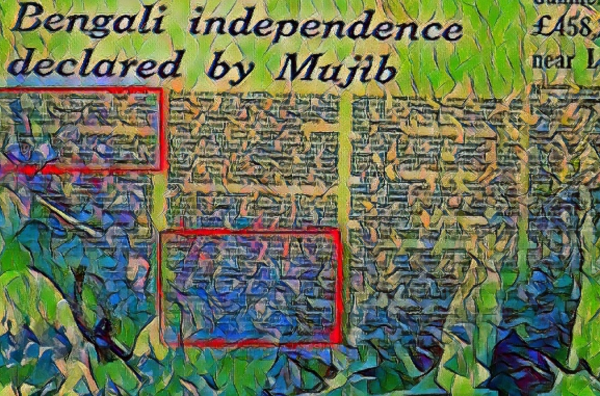
Overlooked issues that demand
re-evaluations
In addition to the overlooked contributions of local forces, the role of international allies, particularly Israel, has often been undervalued.
While India’s support during the war is widely recognized, Israel’s significant backing of the freedom fighters has not received the same level of attention.
Another often-debated issue is the claim of discrimination by West Pakistan against Bengalis in East Pakistan.
While this has been widely asserted, there is a lack of a comprehensive, data-driven database providing detailed and clear information on the extent and nature of this discrimination, leaving the topic open to further scrutiny and interpretation.
So, the uncertainty surrounding the history of Bangladesh's Liberation War is not merely an academic challenge but a fundamental issue that affects our national identity.
It is crucial to properly document the significant events of 1971. During the war, countless innocent Bengalis, Biharis, and ethnic minorities were brutally killed.
A credible and comprehensive record of those who perished must be created, and they should be formally acknowledged by the state.
Moreover, justice must be sought for the perpetrators of these atrocities through transparent and impartial legal processes. While prosecuting every individual responsible may not be feasible, every effort should be made to hold as many accountable as possible.
It is both painful and unethical to exploit the sacrifices of these martyrs for political advantage. The Awami League has used the memory of the 1971 martyrs to silence political opposition, yet has failed to take meaningful steps in officially honoring these heroes.
Until these crucial questions regarding 1971 are addressed, any meaningful discourse on the war’s multiple narratives will remain impossible.
Only by resolving these questions can we begin constructive discussions that will unite us as a nation. Without such resolution, these conversations will only foster blame and division.
—
Mir Salman Shamil is a researcher at the University of Bremen, Germany. He can be reached at- sabbirmir@hotmail.com

